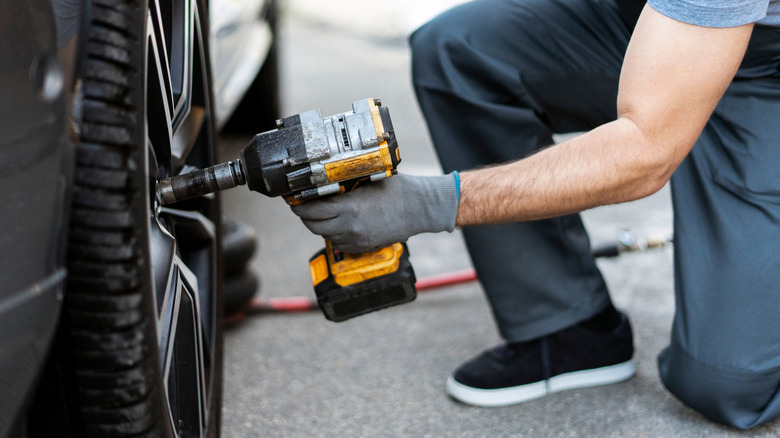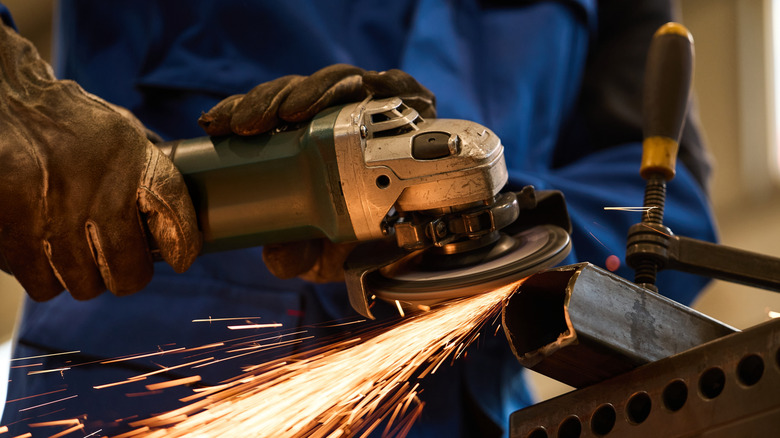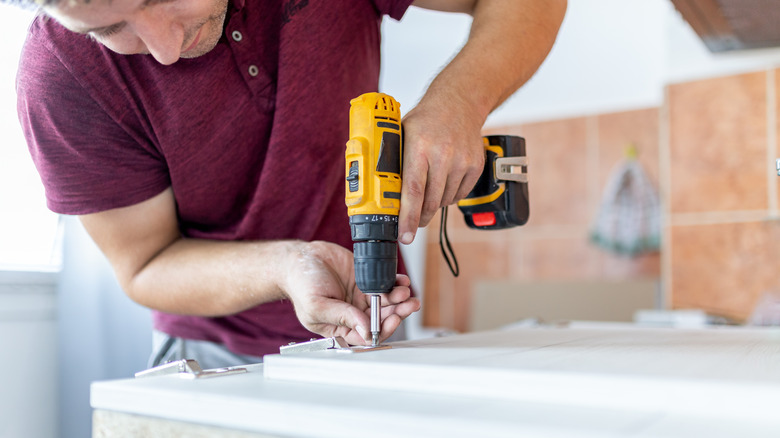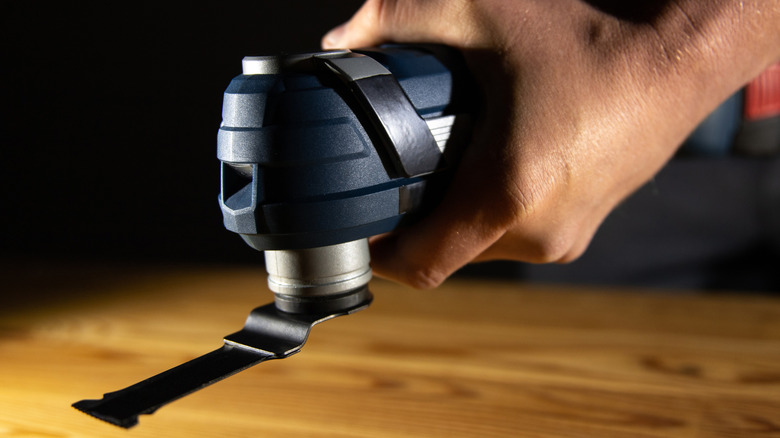5 Power Tools That Don't Require A Ton Of Maintenance
"Every minute a tool is down costs real money and productivity," is something I learned the hard way during my time managing fleet and workshop operations. I've seen repair schedules thrown off simply because an angle grinder or impact wrench failed mid-job. And that's when it dawned on me that low-maintenance power tools are a strategic investment rather than merely a convenience.
How so? Durable tools let you concentrate on the task at hand rather than worry about their maintenance. Things like brushless motors, sealed bearings, dust-resistant housings, and smart battery management systems, all add up to this reliability. This means less operating costs, less downtime while waiting for replacement parts, and fewer service interruptions over the tool's lifespan.
Let's put this into perspective. One air-powered impact wrench used on heavy-duty trucks in our fleet shop, for instance, required regular constant lubrication and part replacement. The tire fitter had to oil the tool daily before every shift, especially during long tire or suspension jobs, and with daily use, parts like hammer pins and O-rings wore out every six months, give or take. However, after switching to a Milwaukee M18 Fuel cordless model, maintenance dropped to basic cleaning and battery care, while the brushless motor and sealed gearbox easily lasted a full year without any service disruptions. That said, we'll look at five such tools — both industrial and garage-grade — renowned for high reliability with minimal maintenance.
Cordless impact wrench
Cordless impact wrenches are indispensable in modern fleet and industrial maintenance. After persistent issues with outdated pneumatic models, I collaborated with our procurement team to reconsider our tool sourcing strategy. Eventually, we ended up switching to the Milwaukee M18 Fuel and the DeWalt XR 20V later on, both of which are strong enough to handle big truck tire-fitting jobs without the hassle of air hoses.
The brushless motor is the real game-changer, as we no longer needed carbon brushes — a common failure point — anymore. In one case, our shop's workload peaked during a long rainy season and trucks were coming back with mud-caked lug nuts requiring constant torque application. Both tools delivered enough fastening torque to get us going and did so without stalling or overheating. Lesser tools would have been destroyed in a matter of months from dust and grit in local yards reaching the motor, but not this time, all thanks to the new tools featuring sealed gear housings.
Suffice it to say, maintenance was minimal — just clean the anvil, inspect the battery contacts, and store the tool in a dry place. Do that and watch the tool maintain its good condition for years to come. The battery packs typically withstand more than 1,000 charge cycles, and the impact wrenches themselves can withstand severe shop use for five years (give or take) if handled properly. Compared to pneumatic wrenches, which need regular lubrication and air compressor maintenance, these cordless models are simpler and save time.
Angle grinder
There are tools that are a must-have for any workshop, and for me, angle grinders arguably top the list. During my time in fleet, I supervised plenty of metal fabrication and truck frame repairs, many of which require intense angle grinder work. When sourcing for the angle grinders for our workshop, we went with Makita 9565CV and Bosch GWS series. Impressive machines, to say the least. Their construction, which includes over-molded housings, labyrinth motor designs, keeps debris out, drastically reducing the possibility of failure.
We once worked on a project that needed us to cut through hardened steel reinforcements on a mixer truck. And honestly, a standard old school grinder with exposed bearings would almost certainly fail in a matter of hours trying to pull off that job. The Makita, however, delivered for more than three hours nonstop, while maintaining consistent RPM and without overheating. Even more impressive, these tools have vibration-dampening systems and automatic power shutoffs, which lessen operator fatigue and extend motor life.
As for matters of maintenance, they're very easy to maintain. All you need to do is inspect the carbon brushes and always use the correct discs, as well as a little cleaning from time to time. Grinders are built to last, unlike air compressor tools or hammer drills with numerous moving parts. With proper care and maintenance, you can expect them — especially professional-grade models — to last up to eight years of continuous service, give or take, depending on the model, usage, and how well you maintain it.
Electric pressure washer
In fleet maintenance, cleaning vehicles — especially mixer trucks — efficiently without causing undue downtime is essential. Otherwise, you risk disrupting logistics delivery schedules, and that's never good for business. We needed to think of a sustainable solution to keep the whole fleet clean without having to worry about machine maintenance, and electric pressure washers turned out to be the answer. Compared to gas-powered and mechanical units, electric models have far fewer moving parts — no carburetors, spark plugs, or engine oil to deal with (or leak into the water).
Every day, our team of car washers had to clean a fleet of concrete mixers and heavy haulers coated in hardened residues and do it fast. We went for the Kärcher HD 13/18-4 S St. Classic, which did the job efficiently. The machine needed almost no maintenance, provided you drain the water after use, keep inspecting the high-pressure hoses for leaks, and store it properly in frost-free conditions.
And thanks to its brass cylinder head and sealed pump system, its longevity is guaranteed, even in such a high-frequency industrial environment. Additionally, electric washers are easy to figure out for new hires, as there's no need to prime engines, change choke settings, or keep monitoring oil levels like with their gas and mechanical cousins. From an efficiency standpoint, that directly translates into quicker turnaround times for fleet cleaning.
Cordless drill-driver
Every workshop needs cordless drills, and modern brushless models like the DeWalt DCD996 are excellent, providing industrial-level reliability with minimal upkeep. We used these drills for different kinds of applications — installing shelves, fastening brackets on truck chassis, drill through touch steel plates, name it. Even with intense operation, their strong gear systems and sealed transmission housings ensure longevity.
A good example from our shop: we once had a whole fleet that needed Chevron replacements, where we opted for self-tapping screws to secure the panels to the trucks' rear. The DCD996 drills performed the job flawlessly, without any motor overheating, gear straining, or battery failure. The battery management system guarantees steady power delivery over hundreds of charge cycles, and the brushless motors do away with carbon brushes, which reduces common wear points.
Cleaning the chunk, inspecting the battery contacts, and proper storage, is all the maintenance cordless drills require to run for years. Even so, make a point of rotating the Lithium-ion batteries to avoid deep discharge. In addition to being dependable, cordless drills increase shop workflow efficiency by keeping projects on track while saving time and effort on repetitive fastening procedures and confined spaces.
Oscillating multi-tool
The oscillating tool is one of those tools that are often overlooked. In my fleet and workshop experience, however, it's one of the most versatile yet effortless to maintain. Models from brands like Bosch Starlock and Fein SuperCut are excellent for tasks — sanding, cutting, scraping, and trimming — that would otherwise need several single-purpose tools.
We used them a lot for different kinds of projects, from fiberglass trimming on utility vehicles to rubber hose modifications on trucks. The oscillating mechanism reduces wear on gears and bearings by producing high-frequency motion with minimal rotation. Starlock blade systems offer a secure fit and efficient power transfer, and in doing so preventing the wobble and wear that's quite common in older multi-tools.
The tool's upkeep is a no-brainer. Simply clean it of debris after each use, inspect the blades for wear and replacing them if necessary. That's it. The motor and gearbox remain sealed and protected, and that by itself ensures longevity, even in heavy-duty environments that would call for the tool to deliver thousands of hours of professional use without compromising performance.





